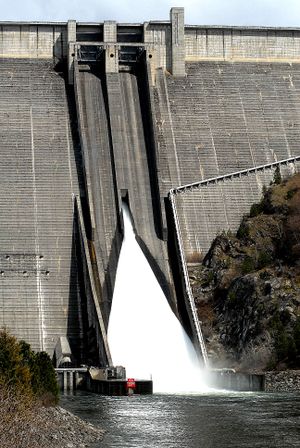Infected steelhead killed at Dworshak Hatchery
FISHERIES -- Managers at Dworshak National Fish Hatchery say they have destroyed 332,000 juvenile summer steelhead since April to protect the rest of the hatchery’s fish from a deadly virus.
In April, 240,000 steelhead were destroyed after IHNV was confirmed in some rearing tanks by the Idaho Fish Health Center.
Officials say they still expect to have enough fish to meet their requirements for mitigating the impacts of Dworshak Dam on wild fisheries.
Read on for details.
The virus, Infectious Hematopoietic Necrosis Virus (IHNV), is extremely virulent and can decimate entire rearing containers of young fish if left unchecked. In April, 240,000 steelhead were destroyed after IHNV was confirmed in some rearing tanks by the Idaho Fish Health Center. These fish were being reared in the hatchery’s nursery area, which is supplied with IHNV-free reservoir water.
The virus may have entered the nursery area from cross-contamination during adult spawning or from North Fork Clearwater River water entering the nursery via an improper valve opening, said Mark Drobish, hatchery manager.
Adult steelhead and salmon are known carriers of IHNV and return to the local area from the ocean to spawn. A portion of this batch of fish that was spawned in January did not appear to be infected by the virus and were held on station for inclusion in the smolt production program. In May, these fish were moved to the outside rearing units. In June, one of the two ponds experienced an increase in mortality. The Idaho Fish Health Center confirmed IHNV in this pond and also confirmed Bacterial Coldwater Disease. Medicated feed was initiated to combat the bacterial infection; however, mortality continued to rise. The decision was made this week to destroy these 92,000 fish to eliminate the risk of spreading the virus to other rearing tanks.
Despite the loss of these fish, the hatchery expects to be able to meet its mitigation target of 2.1 million smolts released next spring, barring other major fish health issues. The hatchery collected additional eggs at the tail end of the steelhead run to help off-set the earlier losses of the fish in the nursery and just in case the remaining steelhead from this first batch of fish tested positive.

